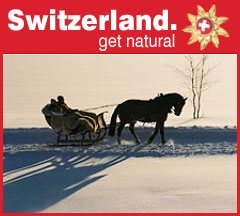 |
 |
|
 |

|
Under Doctor's
Orders:
Rango – One Nutty Village Story and photos by Tom Weber
So, I hopped in my 21st century mode of transport, set the Doc Brown gizmo to 500 B.C., and blasted off for Rango, a tiny dot on the map up in the Bleggio Plateau of the Giudicarie Valley within northern Italy's province of Trento.
One of the Borghi piu belli d'Italia (the most beautiful villages of Italy), so honored by the Association of Italian Municipalities Council of Tourism (Consulta del Turismo dell' Associazione dei Comuni Italiani – ANCI), Rango gets high marks for maintaining its rich culture, traditions, art and history, along with the village's overall appearance.
Back in the day, according to Pliny the Elder, a Roman geographer, the inhabitants of Rango, as well as other parts of the Brenta Dolomites, were nothing more than transplanted Etruscans from the Po Valley who re-settled high in the fertile plains of the northern mountain ranges to escape the invading hordes of Gauls and became known from then on as Raetians.
Today, Rango – a bustling metropolis of a couple dozen carved-out-of-the-bedrock homes that lean on each other for support and stability – has a rich folkloric past filled with stories of pilgrims en route, shepherds tending their flocks, and merchants and lonely travelers spending a night or two then moving on.
At first glance, it appears as if Father Time didn't move a muscle as the mountainside village and its rocky architecture remains true to its roots from many moons ago.
During my walk around –- always under the color of potted flowers and bright-yellow husks of corn hung out to dry – I made my way through low-ceilinged archways, along narrow undulating alleys, across a few foot bridges and through open courtyards.
Although the village is pretty quiet most of the year –- like today – it rolls out the red carpet and invites everyone in for its annual Mercato di Natale (Christmas Market), which runs every weekend during December leading up to Christmas. At the market, visitors can sample and purchase all of the aforementioned specialties linked to the walnut, along with a host of other locally nurtured delectables and handmade crafts.
If you really want too get away from it all, then there's no better place to seek refuge than the Giudicarie Valley of the Trentino. Just make sure you take the lens cap off and meander back in time through Rango, where walnuts rule and Raetians reside.
For complete information on picturesque Trentino, just click HERE. To learn more about the Borghi piu belli d'Italia, just click HERE.
In between tomorrow's two-a-day thermal baths, I'll dry off long enough and go under an umbrella to show you around the banks of the river that runs alongside my temporary digs: the Fiume Sarca. Ciao for now! Related Articles:
|
|
Feedback for Destination Bosnia: Inside Sarajevo's Tunnel of Hope Spent time in Sarajevo in the fall of 1973…beer was excellent! --- David * * * * Hi Tom, I must say, you're photographs are always amazing. They are top notch. You bring so much class to Traveling Boy. It's photographs like yours that make me want to go out and do my own traveling. Please don't get tired of sending us your amazing adventures. It's such a delight for the soul. --- Raoul, Whittier, CA * * * * Hi Tom: --- David * * * * Hey Tom – Wow! Love those photos – they are so super that they make me A) Want to start eating NOW. B) Go there myself. C) See all that pristine beauty that looks so restful and peaceful. Great story, superb pix!!! Bravo!! --- John, Los Angeles, CA * * * * Feedback for Destination Southwestern France: Saint-Émilion Good job, Tom, and timely info. St. Émilion is in the list of places Jim Hayes and I will visit in September 2014. If we get the chance, we will exploit your experience to enhance the trip! --- Bobby Harper, Dameron, MD * * * * Feedback for Vicenza Walks – Monte Berico I lived in Vicenza for 4 years in the U.S. ARMY from 1963 to 1967. A wonderful place to explore. Palladio’s works are amazing. Have been back twice since and find new places to visit. My favorite is MONTE BERICO where I have some wonderful photos of my family. --- Dr. Albert Pizzi, Hanover, MA * * * * I liked the new TB particularly the Vicenza article that took me back as a youth when we lived in Naples and travelled up there for a baseball tourney (U.S. Military Bases dependent schools played each other.) Took me back to the plaza. --- Bill Feedback for A Canterbury Trail (Sutri) Very interesting note. I have wedroned which route the early pre-Christian and Christian pilgrims travelled to Rome from England. Is it still possible to travel the Francigena trail? --- Pawel You can find out more info on walking tours of Via Francigena at this site: http://www.compagniadeicammini.it/en/. Thanks for stopping by and commenting.. Tom * * * * Good article, enjoyed reading it. Saved your recommended sights for future use. --- Dardenne Prairie, MO * * * * You're going to be great at this Tom. Congrats. --- Donna Vissa -Montreal
|
This site is designed and maintained by WYNK Marketing. Send all technical issues to: support@wynkmarketing.com

|






































